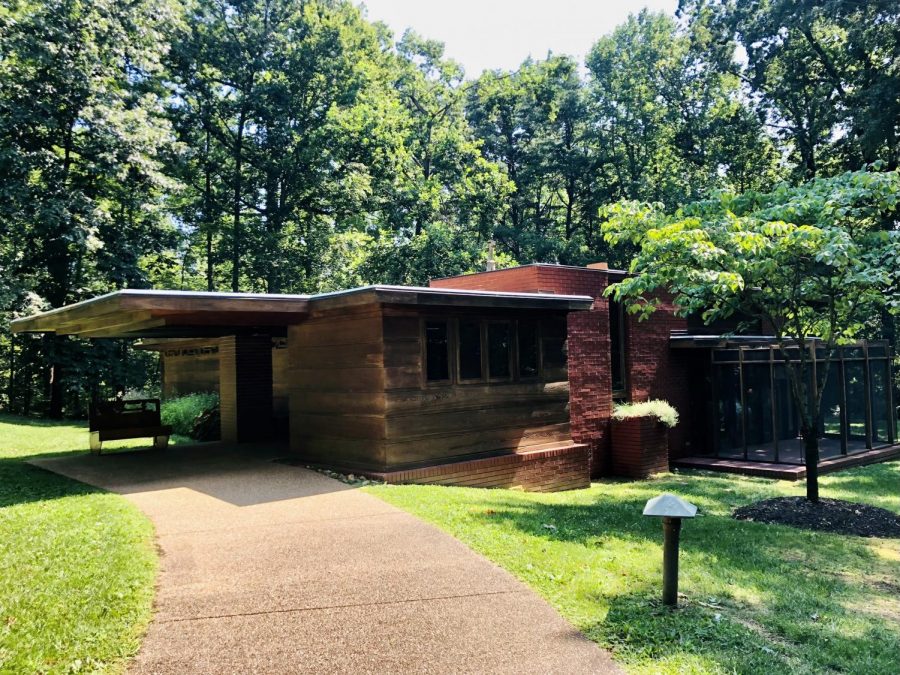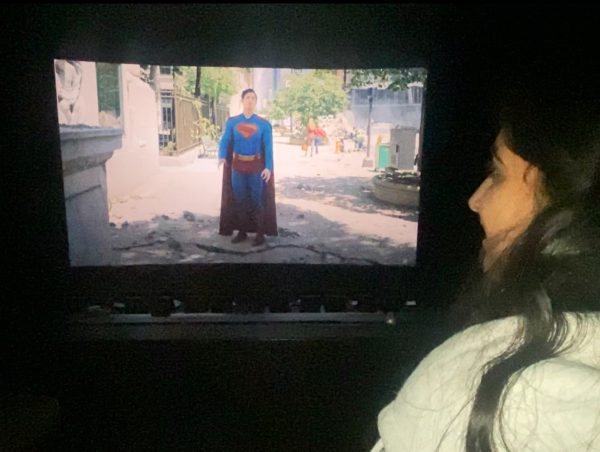Gems in the shadows: The Pope-Leighey House
Commissioned in 1939 and completed in 1940, the Pope-Leighey House is one of only 60 Usonian houses constructed by Wright. It is encouraged that our readers experience the true beauty of this location for themselves.
We are lucky to live in a region rich with history, artifacts, monuments and stories that helped shape our area and our nation. However, many of these gems are hidden in the shadows of larger, more popular attractions, waiting to be explored. One such place is the Pope-Leighey House, located in the shadows of Mount Vernon in Alexandria, Virginia.
Frank Lloyd Wright was a renowned American architect known for his unique style of incorporating nature into the homes he designed. While most of his creations were reserved for those seeking a luxurious establishment, in the early 1930s Wright wrote about wanting to design a series of homes that were more affordable to the middle-class, called Usonian homes.
Loren Pope, an editor at the time for the Evening Star newspaper in Washington, D.C., was inspired while reading about Wright’s new plan in the papers to build one of these more affordable homes for his family.
Pope decided that his best chance for Wright to agree to design and build him a house would be to write him a letter full of flattery of previous projects Wright had directed. This letter included phrases such as, “while any architect can build me a house, you can build me a home,” Peter Christensen, the current tour guide for the Pope-Leighey House said. Soon after receiving the letters, Wright agreed to the project.
When Pope first met with Wright to discuss the construction of the house, Wright did not ask what layout he wanted, but rather the lifestyle Pope and his family aspired for. This included how often Pope would look to host guests, and how many children he planned to have. Their conversation inspired the masterpiece that stands today.
Wright felt strongly that natural surroundings should be used and incorporated into his work, and he wanted to capture that in his homes. In fact, the Pope-Leighey House was built to fit the landscape, rather than the landscape being modified to fit the home.
Despite its modest size, Wright makes the estate seem like a large, elegant structure by using intriguing architectural designs. Everything within the house is intentional; every nail equally spaced amongst the walls has the screw turned horizontally to follow the grain of the wood. The bricks in the compressed front entrance all flow toward the living room to draw people in, and once people enter the main living quarters, the room opens up with a high ceiling, giving the illusion that there is much more space in this 1,200 square foot home.
The estate is composed of cypress wood, known to repel termites and rotting, along with a cement base, and bricks and glass windows to keep the look simple and blend with the natural surroundings. “Most people, if they want to make a house look better, add something on to it. Wright actually took off from it. It’s smaller, yet still extremely functional and comfortable,” Christensen said.
Wright was a master at working with the minimum for maximum results. He used water pipes under the house’s base to serve as a natural heating system, and lined the perimeter of the ceiling with uniquely-shaped windows. The windows served as an air conditioning system, allowing the hot air that has risen to escape while the cooler air circulates throughout the house.
The interesting thing about the Pope-Leighey House is that it is not just a house, but a look back into history. This home was one of the first to start the precedent of placing the kitchen in an open space, just like what a typical household has today. Within the kitchen is the same refrigerator that Mrs. Leighy used, complete with an old ice maker. While touring the house, visitors can view a bathroom, which is intriguing because only 35 percent of the houses in America had an indoor bathroom in the 1940s.
For those who are looking to experience Wright’s work, or maybe are just interested in trying something new, the Pope-Leighey House is a phenomenal place to start. As Christensen puts it, “If you come to this house, you’ll understand the principles that Wright is using.”
Although smaller than Fallingwater or the Guggenheim Museum (two of Wright’s most popular structures), tourists can still fully appreciate all of Wright’s architectural techniques and craftsmanship at the Pope-Leighey House.
The Pope-Leighey House is located at 9000 Richmond Hwy, Alexandria, VA 22309
Your donation will support the student journalists of Thomas S. Wootton High School. Your contribution will allow us to purchase equipment and cover our annual website hosting costs.
Joshua M. Freedman is a 2022 graduate.










